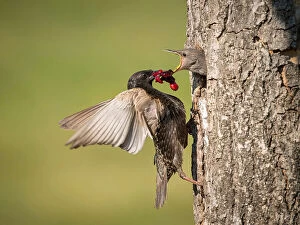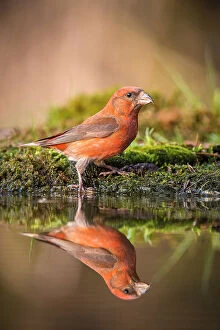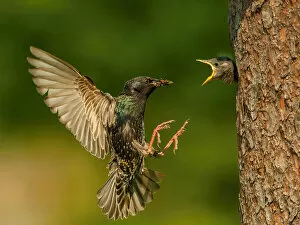Nesting Cavity Collection
"Exploring the Fascinating World of Nesting Cavities in Nature" Nesting cavities play a crucial role in the lives of various bird species
For sale as Licensed Images
Choose your image, Select your licence and Download the media
"Exploring the Fascinating World of Nesting Cavities in Nature" Nesting cavities play a crucial role in the lives of various bird species, providing them with safe havens to raise their young and seek shelter. From the vibrant Red Crossbill to the sociable Common Starling, these avian creatures have mastered the art of finding or creating their ideal nesting cavities. The Red Crossbill (Loxia curvirostra) is known for its unique beak adaptation that allows it to pry open pine cones. These resourceful birds often build their nests within coniferous trees, utilizing crevices and gaps as perfect nesting sites. Similarly, the Common Starling (Sturnus vulgaris) showcases remarkable adaptability when it comes to nesting cavities, and are known for their gregarious nature and can nest in a variety of locations such as tree hollows, buildings, or even man-made structures like chimneys. In contrast, the Golden-fronted Woodpecker (Melanerpes aurifrons) prefers palm trees as its preferred nesting cavity location. The male diligently carves out holes in these towering trunks to create secure homes for his family. Another fascinating inhabitant of nesting cavities is the White-breasted Nuthatch (Sitta carolinensis). This agile bird can be spotted clinging upside-down on tree trunks while searching for insects or excavating its own cozy cavity using its sharp bill. Amongst these captivating species is also Williamsons Sapsucker (Sphyrapicus thyroideus), which relies on aspen trees for both food and shelter. The adult males skillfully construct intricate nests within these slender trunks while females hunt ants nearby. These examples highlight just a few instances where birds utilize nesting cavities across diverse habitats worldwide. Whether they are naturally occurring hollows or meticulously crafted by skilled architects like woodpeckers, these shelters provide a safe haven for avian families.






